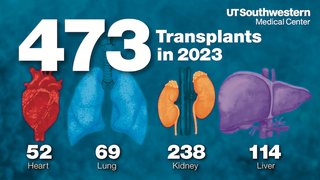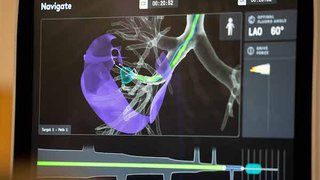Search for opportunities to participate in a lung disease or asthma research study.
Lung Nodules
New Patient Appointment or 214-645-7700
MedBlog
Results: 6 Locations
Allergy, Immunology, and Pulmonary Clinic
at Professional Office Building 2 5939 Harry Hines Blvd., 9th FloorDallas, Texas 75390 214-645-6616 Directions to Allergy, Immunology, and Pulmonary Clinic at Professional Office Building 2, Dallas Parking Info for Allergy, Immunology, and Pulmonary Clinic
Cardiovascular Thoracic Surgery Clinic
at Cancer Care Outpatient Building 6202 Harry Hines Blvd., 9th FloorDallas, Texas 75235 (214) 645-4673 Directions to Cardiovascular Thoracic Surgery Clinic at Cancer Care Outpatient Building, Dallas Parking Info for Cardiovascular Thoracic Surgery Clinic
Thoracic Surgery
at UT Southwestern Medical Center at RedBird 3450 W. Camp Wisdom RoadDallas, Texas 75237 214-645-7700 Directions to Thoracic Surgery at UT Southwestern Medical Center at RedBird, Dallas Parking Info for Thoracic Surgery
Thoracic Surgery
at UT Southwestern Medical Center at Coppell 2999 Olympus Blvd., 3rd FloorCoppell, Texas 75019 214-645-7700 Directions to Thoracic Surgery at UT Southwestern Medical Center at Coppell, Coppell Parking Info for Thoracic Surgery
Thoracic Surgery
at UT Southwestern Harold C. Simmons Comprehensive Cancer Center at Moncrief Cancer Institute 400 W. Magnolia AvenueFort Worth, Texas 76104 214-645-7700 Directions to Thoracic Surgery at UT Southwestern Harold C. Simmons Comprehensive Cancer Center at Moncrief Cancer Institute, Fort Worth Parking Info for Thoracic Surgery
UT Southwestern Thoracic Surgery at Texas Health Dallas
at Professional 3 8230 Walnut Hill Lane, 204Dallas, Texas 75231 214-645-7700 Directions to UT Southwestern Thoracic Surgery at Texas Health Dallas at Professional 3, Dallas Parking Info for UT Southwestern Thoracic Surgery at Texas Health Dallas








